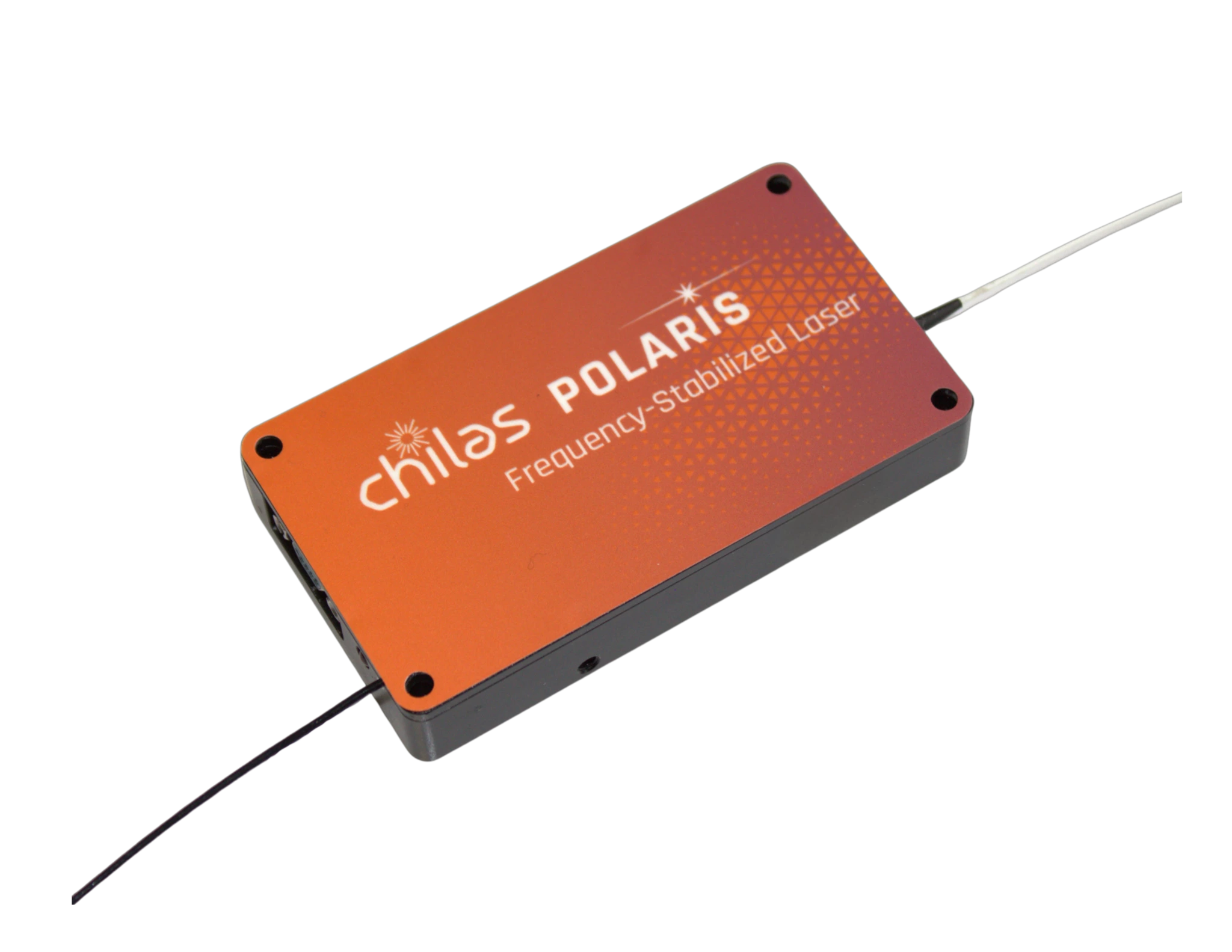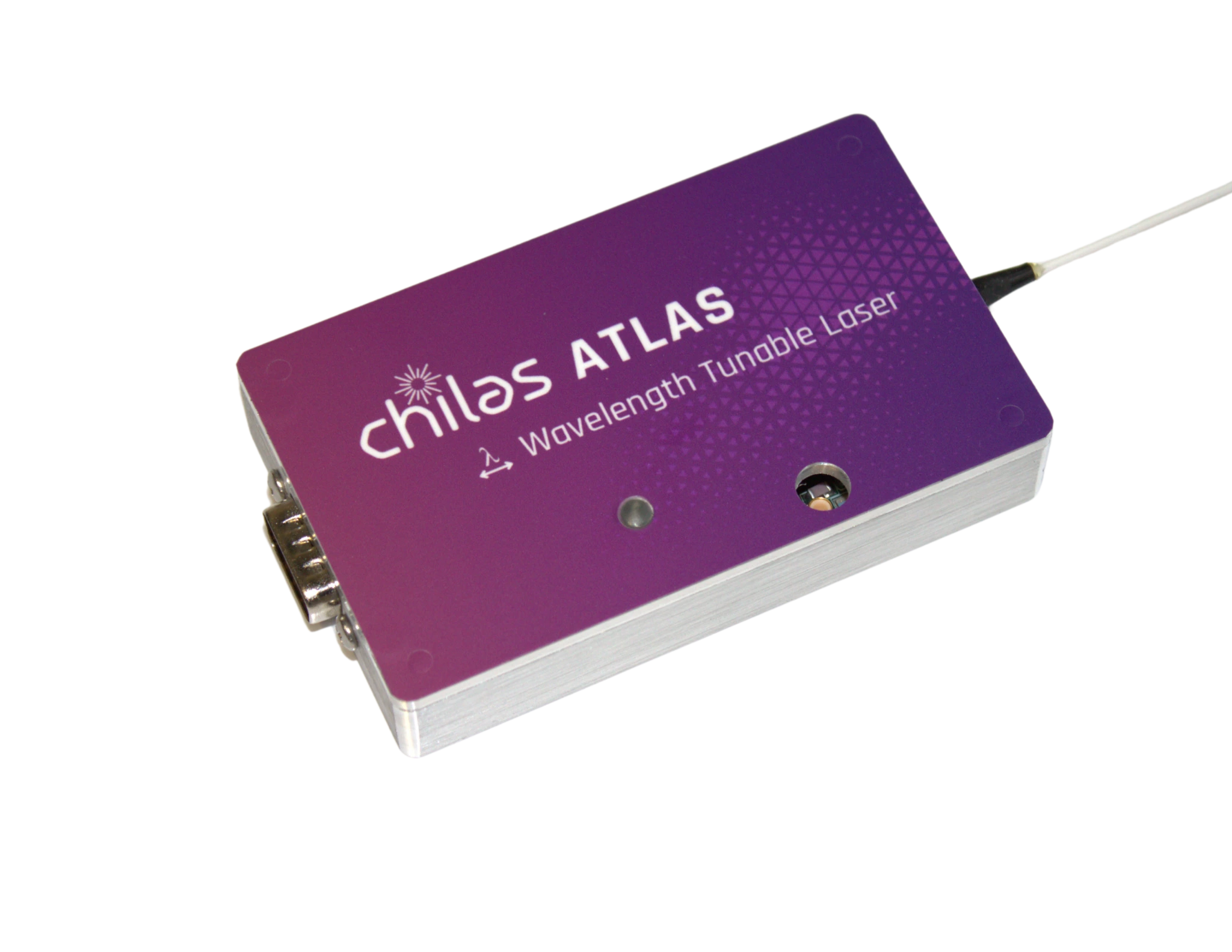Chilas COMET – Wavelength-Swept Source Laser
Chilas COMET is a swept source laser, also referred to as a wavelength-swept laser, delivering a fiber output power exceeding 20 mW and sweeping across the entire C-band at speeds up to 100 nm per second. A dedicated driver and improved calibration procedures allow for quasi-continuous sweeping across the full tuning range.
The COMET module uses an hybrid integrated external cavity laser (ECL) as optical engine. The wavelength-swept laser’s innovation lies in its fully chip-based wavelength filter, a design that eliminates the need for mechanical moving parts.
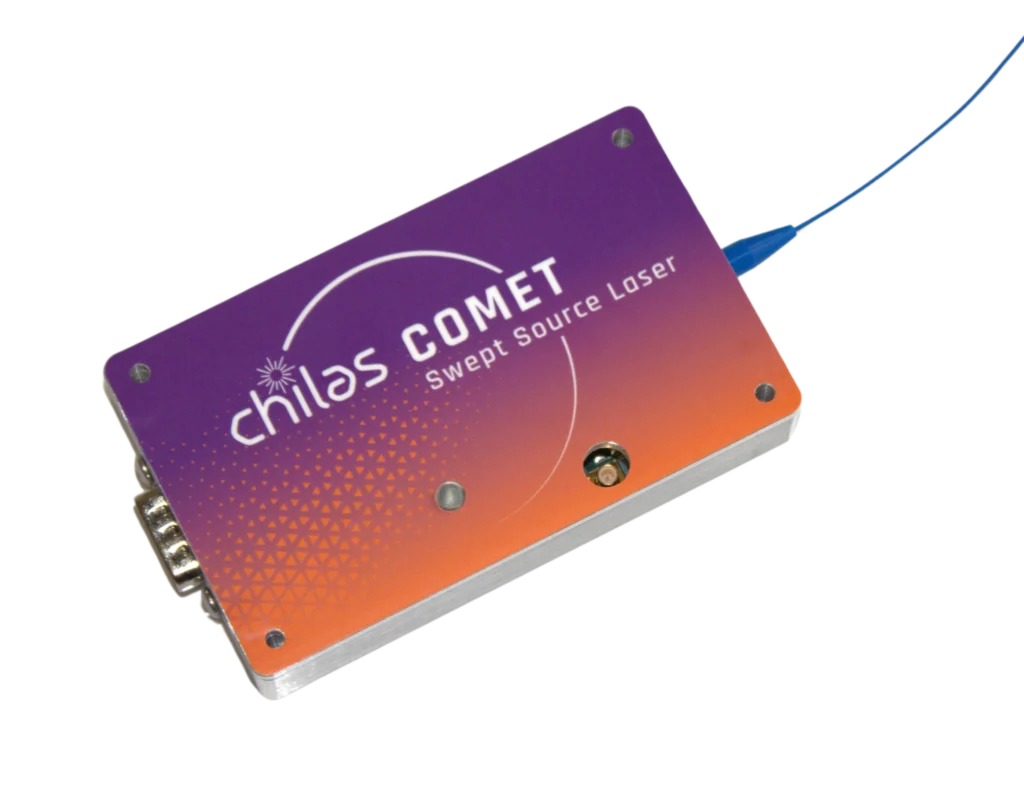
Key features
- C-band tunability
- Continuously sweeping
- Ultra-narrow linewidth
- Low RIN
- Excellent SMSR
- Fully integrated with no moving parts, enabling switching between wavelengths instantly
- Exceptional repeatability
- Software based wavelength calibration
- Easy to set-up and use
- Compact size
Applications
- Sensing market (biomedical, infrastructure and vibration)
- Quantum Key Distribution
- Optical device testing (optical chip inspection for both active and passive components)
- Spectroscopy
- OCT (optical coherence tomography)
- Telecommunications
- Terahertz generation
Optical specifications
| Parameter | Specification |
|---|---|
| Center wavelength | 1550 ± 5 nm |
| Wavelength range* | Up to 50 nm |
| Wavelength resolution* | ≤ 5 pm |
| Wavelength absolute accuracy | ± 10 pm |
| Wavelength repeatability^ | ≤ 1 pm |
| Intrinsic linewidth | < 1 kHz |
| Fiber output power | ≥ 20 mW |
| Sweeping speed* | 1 to 100 nm/s |
| Side-mode suppression ratio | ≥ 50 dB |
| Package | 100*60*20 mm |
| Fiber connector | PM FC/APC |
*To be determined upon ordering
^Determined at 50nm/s, with 5 pm resolution
Perfectly Linear Swept Source Wavelength
The accompanying graph illustrates the measured wavelength over several sweep cycles of Chilas Comet, the Swept Source Laser. Each cycle exhibits a perfectly linear increase in wavelength, followed by an instantaneous reset to the initial wavelength, confirming the system’s precise and consistent performance.
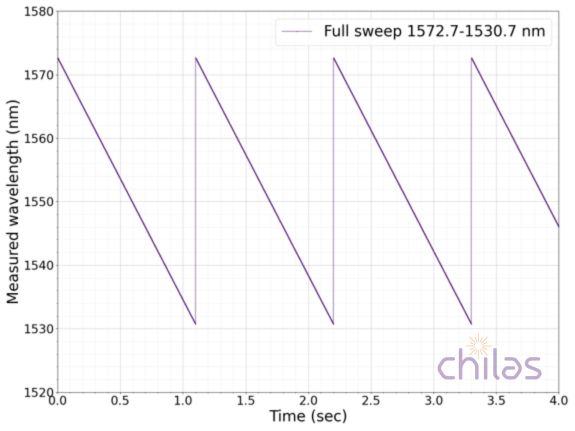
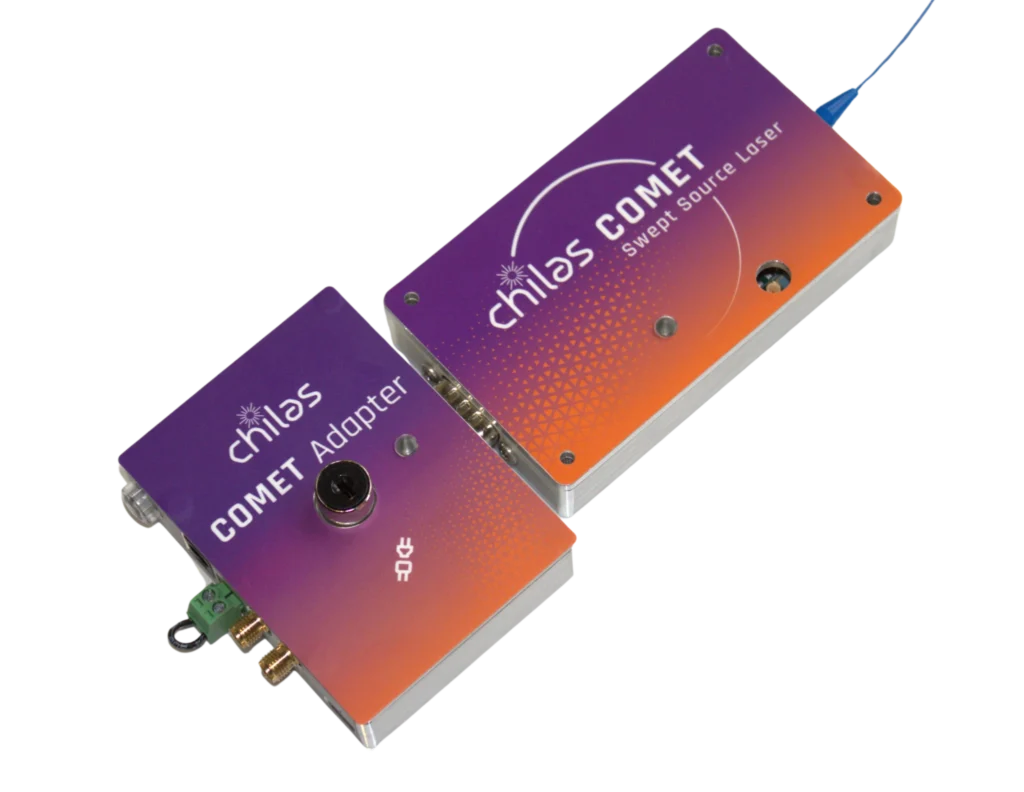
Comet Adapter
To ensure seamless system integration, the base module comes equipped with a standard DE9 connector. For added convenience, we offer an add-on module featuring connectors for power, communication (USB-C), and sweep synchronization (SMA). To meet laser safety standards, this module adds key control and a remote interlock connector.
Intuitive Software for Seamless Laser Operation
For intuitive operation and control, we provide a software interface which includes a graphical user interface (GUI) for straightforward wavelength setting and tuning, along with a Python library for advanced laser control functions.
Download the COMET Graphical User Interface here. Check out our online Python library on our Github profile.
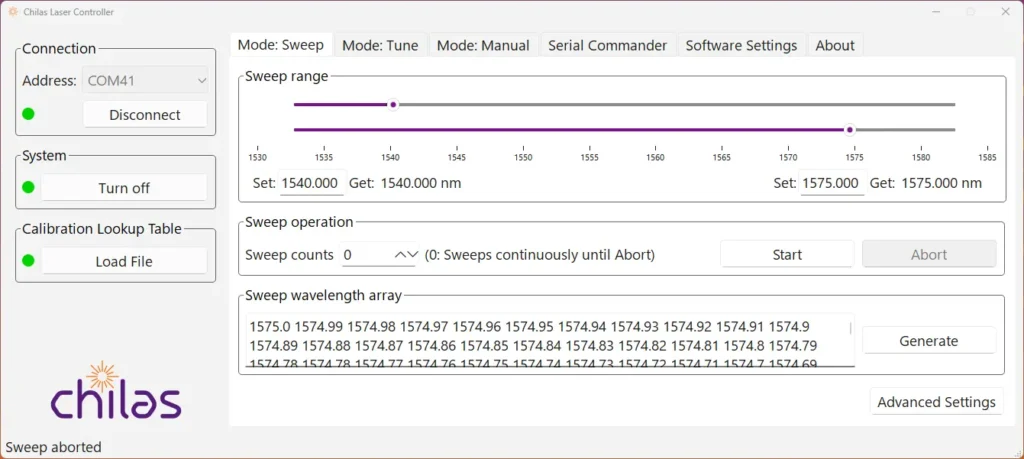
Frequently Asked Questions about COMET
Questions regarding the MODULATION of the laser
Questions regarding the TUNING of the laser
ⓘ Blog article : Demonstration of Chilas COMET Swept Source Laser in Action

